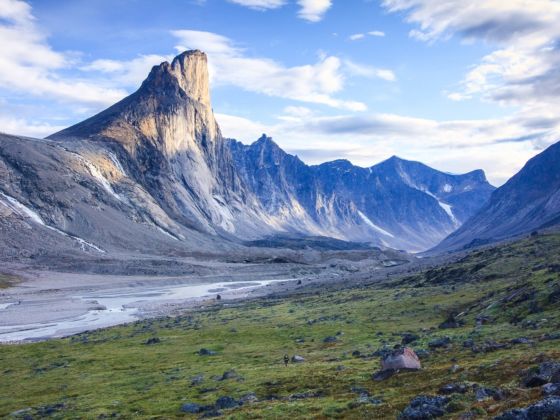

Nunavut is the largest territory of Canada and also the northernmost--located in the Arctic circle.
Its name translatable as "our land," Nunavut has strongly preserved its native Inuit culture and language, and as a visitor, you'll encounter people living with traditions and customs completely different from those found anywhere else
Because of its massive distances between places and extreme weather cycles (snow covered spring, weeks of 24-hour summer sunshine), travel to Nunavut has a built in adventure element, with access to pristine wilderness and abundant wildlife like few places left on earth.
Planning your Trip
The best time to come: Spring and summer. Spring is great for floe edge trips, dogsled trips, skidooing, cross-country skiing, hamlet celebrations, fishing derbies, and more. In summer, count on hiking, climbing, fishing, hunting, canoeing, kayaking, whale watching, or cruise offerings. Other activities stretch into several seasons, like birding, wildlife viewing and art tours.
Weather
Summer months are July and August, with ice breaking up (later in August for North Baffin Island and the High Arctic). Daytime highs range from around 12° C on Baffin Island to around 24° C on mainland Nunavut. The snow returns and ice freezes up in October/September. Spring, from March through to June, is like a southern Canadian winter. Daytime highs are between -20° C and -10° C but since most of the Arctic is a polar desert, the low humidity reduces the impact of the cold. Plus, the intense sunshine lasting up to 18 hours helps take the edge off! With the right gear, including sunscreen and sunglasses, springtime is one of Nunavut’s ultimate pleasures.
How to get here
By plane – there are no roads, ferry or rail service connecting Nunavut to the rest of Canada, or for that matter, connecting communities within Nunavut (except for a 21-kilometre stretch between Arctic Bay and Nanisivik). There are regular flights to Nunavut from Ottawa, Montreal, Winnipeg and Edmonton in southern Canada and between communities.